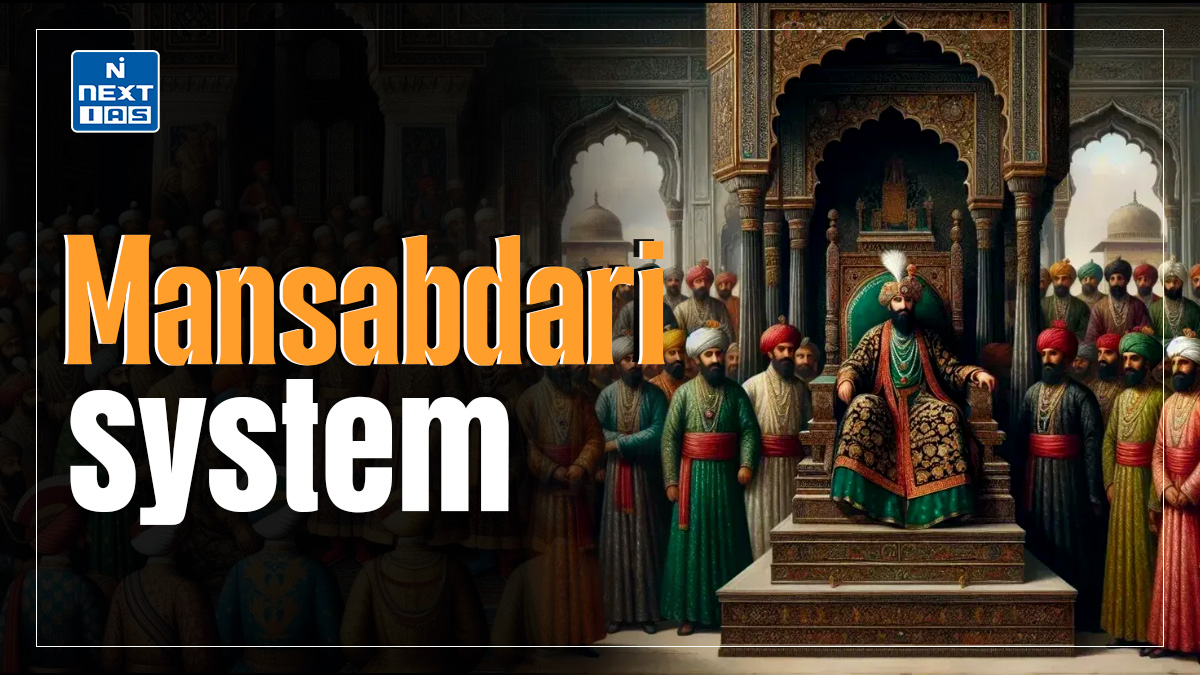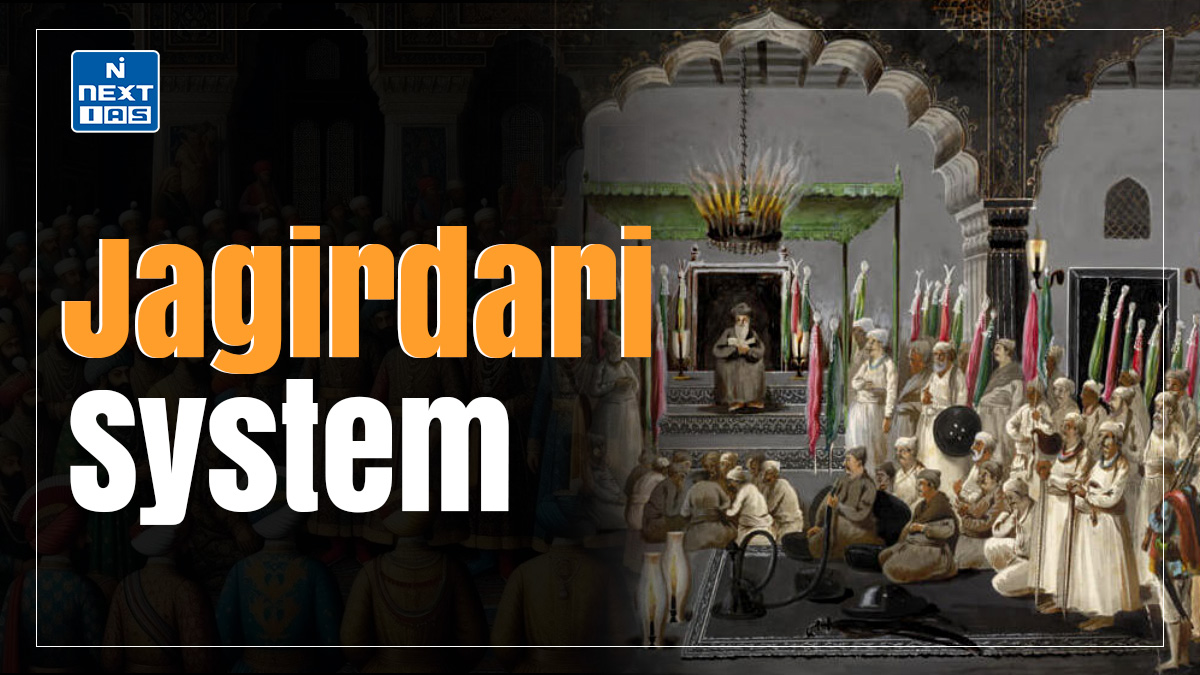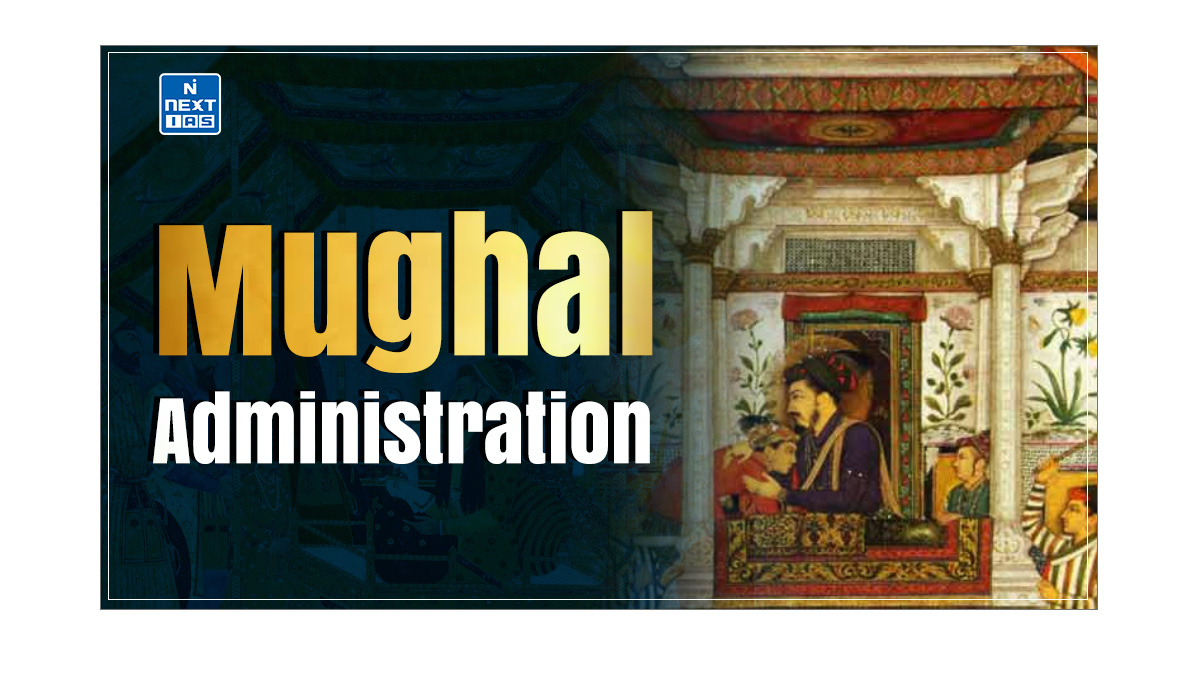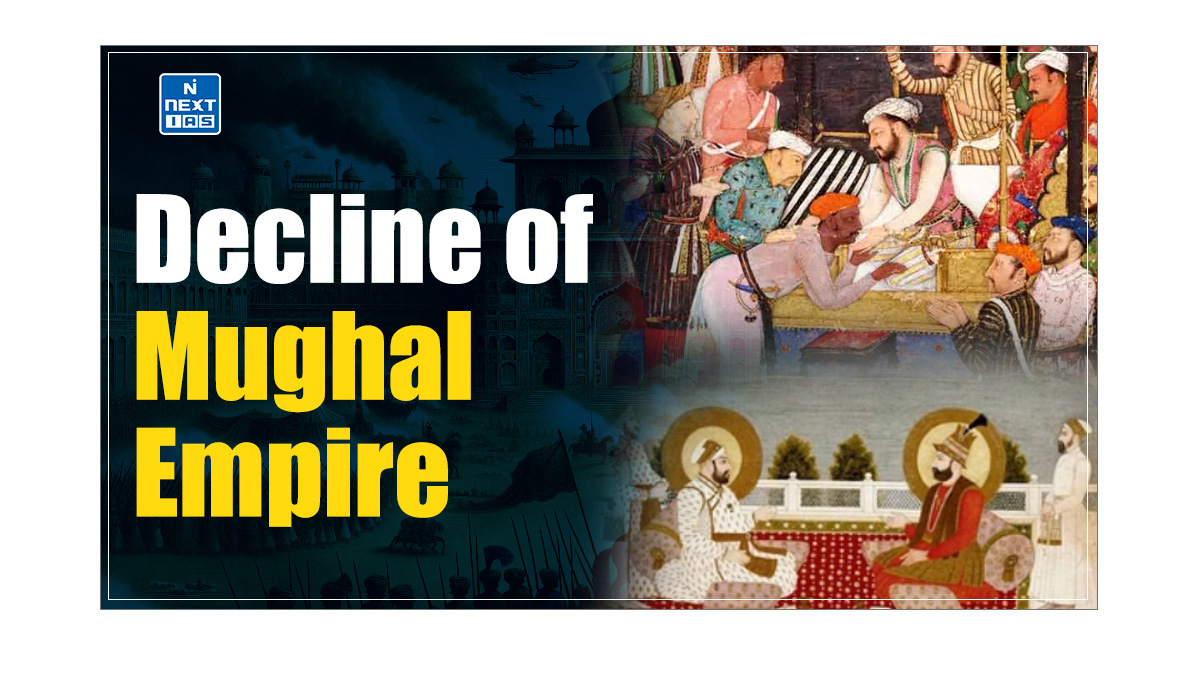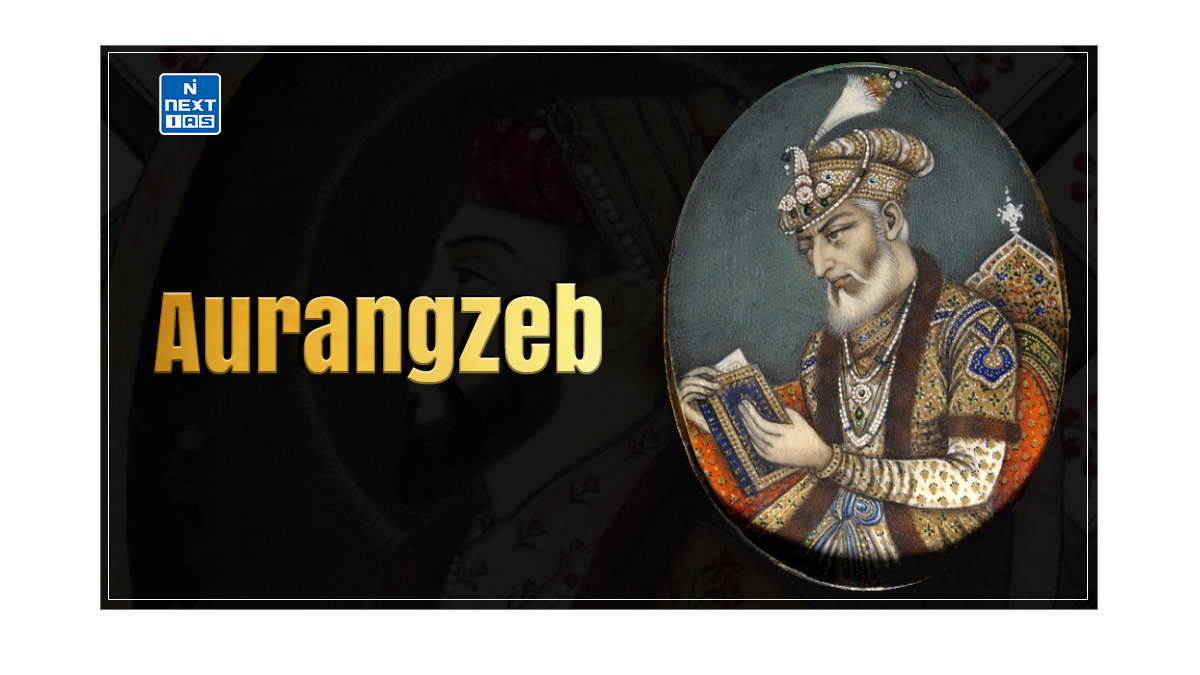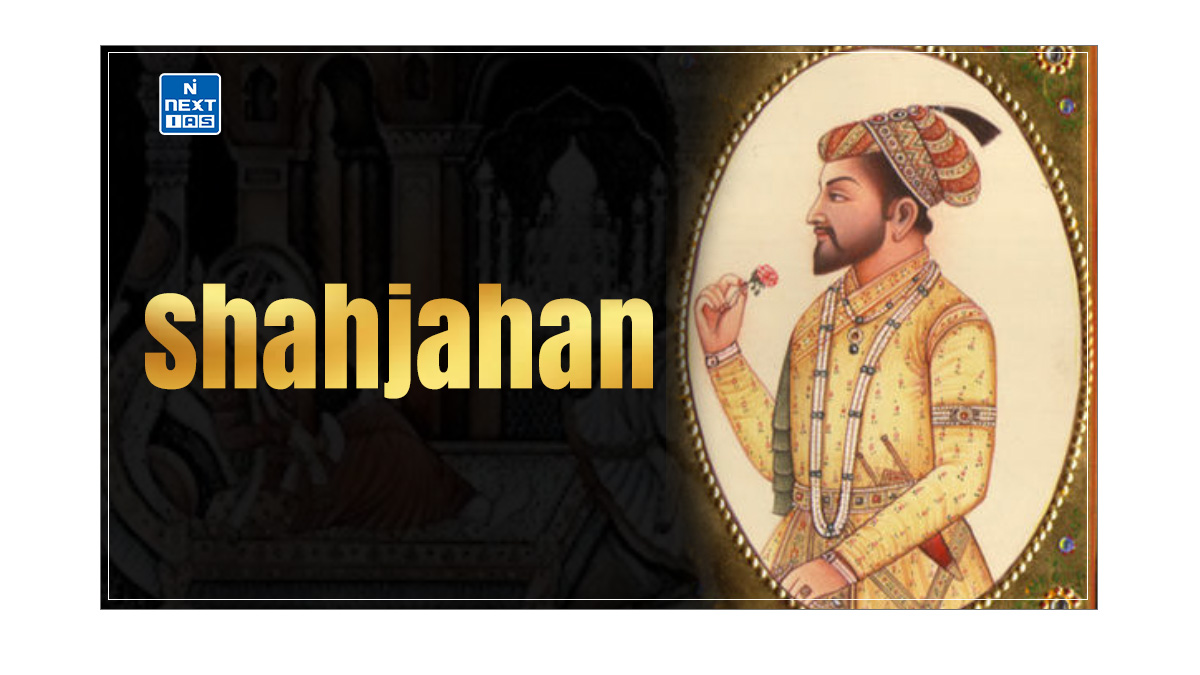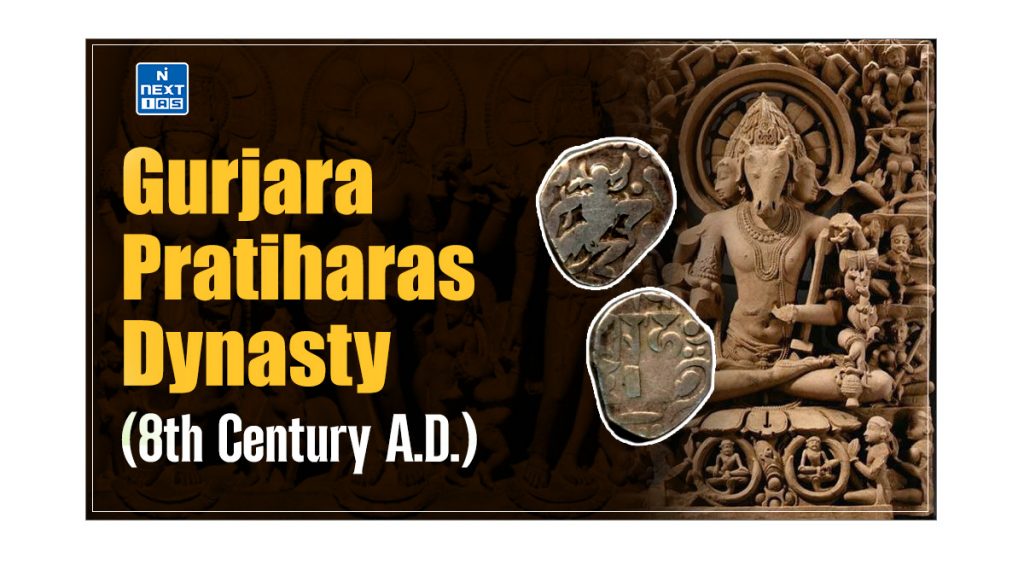
The Pratiharas Dynasty, also known as the Gurjara-Pratihara Dynasty, was a prominent medieval Indian dynasty that ruled large parts of northern India from the 8th to the 11th centuries. They played a crucial role in defending India against Arab invasions and were instrumental in shaping the political landscape of the subcontinent during their time. This article aims to study in detail the history, administration, culture, and impact of the Pratiharas Dynasty on Indian society and politics.
About Gurjara Pratiharas Dynasty
- The dynasty, also known as the Gurjara-Pratihara dynasty, ruled over much of northern India from the middle century.
- It is believed that they ruled first from Ujjain and later established capital at Kannauj.
- Harichandra founded this Dynasty in the 6th century. Nagabhata-I (730-756 AD) was the first important ruler of this dynasty, who ruled from Mandore (Jodhpur) to Malwa, Gwalior, and Bharuch. His capital was Avanti in Malwa.
Capital of Gurjara Pratiharas Dynasty
- The capital of the Gurjara Pratiharas was Kannauj, a prominent city in northern India during the 8th to 10th centuries.
- Under the rule of the Gurjara Pratiharas, Kannauj flourished as a political, cultural, and economic centre, serving as a key hub for trade and learning.
- The dynasty is noted for its patronage of the arts and literature, and Kannauj became a significant site for Hindu and Jain scholarship.
- The city’s strategic location also made it a focal point in the power struggles among regional kingdoms, highlighting its importance in the historical landscape of medieval India.

Political Sphere of Influence of Gurjara Pratiharas Dynasty
- The Gurjara-Pratiharas were instrumental in containing the march of Arab armies moving east of the Indus River after Mohammad Qasim’s conquest of Sind.
- Nagabhata-I defeated the Arab armies under Junaid and Tamin, who during the Caliphate campaigns in India tried to extend their influence.
- Nagabhata-I was succeeded by Vatsaraja who captured Kannauj and thus came in direct conflict with the Palas of Bengal.
- Although he defeated Dharmapala, in 786 AD, the Rastrakuta King Dhruva defeated him.
- Vatsaraja was succeeded by Nagabhata II. Under the rule of Nagabhata II, the Gurjara-Pratiharas became the most powerful dynasty in north India.
- Nagabhatta II was hailed for rebuilding the Somnath Temple, which was destroyed by the Caliphate armies under Junaid.
- The renovated structure was a large Red Sandstone structure that was again destroyed by Mahmud of Ghazni.
- Nagabhata-II was succeeded by his son, Ramabhadra, who was succeeded by his son, Mihira Bhoja.
- Under Bhoja and his successor Mahendrapala-I, the Pratihara Empire reached its zenith of prosperity and power. During Mahendrapala’s rule, the extent of its territory rivalled that of the Gupta Empire.
- It stretched from the border of Sindh in the west to Bengal in the east and from the Himalayas in the north to areas past the Narmada in the south.
- This expansion of territories triggered a tripartite power struggle with the Pala and Rashtrakutas empires for control of the Indian subcontinent.
- During this period, Pratihara rulers assumed the imperial title of Maharajadhiraja (Great King of Kings of India).



Administration of Gurjara Pratiharas Dynasty
- As with other kingdoms, Pratihara Kings’s administration was monarchical.
- The King occupied the highest position in the state and had enormous powers. They adopted big titles such as ‘Parmeshwara’ and ‘Maharajadhiraja’.
- Various samantas were appointed by the Kings. The samantas used to give military help to their Kings when called upon.
- Although the advice of the high officers was taken in matters of administration, there is no reference to mantriparishad or ministers in the inscriptions of that period.
- The state was divided into many bhuktis or provinces. Each bhukti had several mandalas and each mandala had several cities and many villages.
- Thus, it is evident that the Pratihara rulers organized their empire into different units for administrative convenience.
- The villages in Pratihara kingdom were locally administered.
- The elders of the villages were called Mahattars, and they looked after the town’s administration.
- Gramapati was an officer of the state who advised in matters of village administration.
- It can be observed that the administration of the Pratiharas was quite efficient. It was due to this efficient administration that the Pratiharas were able to defend India from the attacks of the Arabs.
Religion of Gurjara Pratiharas Dynasty
- The age of Pratiharas was the age of the progress of the Hindu religion.
- Different sects of Hinduism progressed during their rule. Vaishnava, Shaiva Shakta and Surya were the prominent sects of Hinduism, which were prevalent during this period.
- The people of these sects considered the construction of temples and statues a sacred duty.
- The kings and other rich people donated generously for the construction of temples.
- Budhism and Jainism were on declined why Brahmanism was progressing during this period.
Economy of Gurjara Pratiharas Dynasty
- The Economy during Pratihara’s rule was mainly of agrarian nature.
- The primary source of government revenue was the tax levied on agricultural production.
- The feudal system was highly prevalent, and standing armies provided the feudal levies from subordinate lords or chiefs to the Gurjara king, who was garrisoned on the frontiers.
- The Pratihara period was also characterised by the high decentralisation of governmental authority, de-urbanization and devolution of economic activity from international to local scale.
- There seems to have been a lack of gold coins in the Gurjara-Pratihara dominions.
- The purchases were made with copper coins, the major medium of exchange during that period.
Art and Architecture of Gurjara Pratiharas Dynasty
- Famous architectural works generally credited to the early Pratiharas are present in Osian in the heart of Gurjara and to the east in the great fort at Chittor.
- In north-central India, Pratihars built various temples around Gwalior comparable to the later work in Osian. The extraordinary Teli-ka-Mandir in Gwalior Fort is a majestic example of Pratiharas temple art.
- Pratiharas were great temple makers. In their early works, various elements of the mature northern style of temple construction appeared, such as Latina mulaprasadas with varied planes accommodating ambulatories, balconies, open halls with full vedika, and Phamsana roofs.
- In the next phase of their development, the Pratiharas concentrated on elaborating the superstructure of temples.

Importance of Gurjara Pratiharas Dynasty
- Among all the Rajput clans that ruled in India during the medieval period, the Gurjara-Pratiharas dynasty had the most impressive record.
- At their zenith, the Pratiharas’ influence extended from Punjab to Central India and from Kathiawar to North Bengal.
- For three centuries, they were mainstays of India’s defence and thwarted the attempts of Arab invaders. They briefly revived the dream of India’s political unification after the fall of the mighty Harsha dynasty.
- It is said that the Gurjara-Pratihara dynasty was the last great imperial Hindu dynasty of Northern India prior to the Islamic occupation of the country. The empire of the Gurjara-Pratiharas was not only the large in territorial extent but also one of the best administered empires as observed above. The kings were not only great warriors, but also liberal patrons of arts and literature.
- The Pratihara Dynasty was a time of immense political and military genius. The illustrious Pratihara kings Vatsaraja, Nagabhata II, Bhojadeva (Mihira Bhoja I), and Mahendrapala surely deserve special mention in India’s history.
- It is to be specially remembered that the Gurjara-Pratiharas had to build their power under the tripartite struggle with the Palas and the Rashtrakutas. They were known fondly for the welfare of the subjects.
Tripartite Struggle of Palas, Pratiharas & Rastrakutas
- In the 9th Century AD, the Pratihara Empire, the Pala Empire, and the Rashtrakuta Empire engaged in a tripartite struggle to control northern India.
- Dharmpala, the Pala King and Vatsaraja, the Parithara King, struggled for supremacy over Kannauj. Vatsaraja emerged victorious but was later defeated by the Rashtrakuta King Dhurva-I.
- After Dhruva-I returned to the south, Dharmpala again captured Kannauj, but his occupation was short-lived. For about two centuries, kingdoms had been continuously fighting a tripartite struggle for control over Kannauj.
Read our detailed article on the Tripartite Struggle.
Conclusion
The Pratiharas Dynasty played a crucial role in defending India from foreign invasions and promoting cultural and political unity in Northern India. Their reign saw the revival of Hindu religion, flourishing art and architecture, and strategic dominance over Kannauj. Despite the challenges of the Tripartite Struggle, the Pratiharas left a lasting legacy of strength, resilience, and cultural contributions to Indian history.
Frequently Asked Questions (FAQs)
Who was the founder of the Gurjara Pratihara dynasty?
Nagabhata I was the founder of the Gurjara Pratihara dynasty.
Where is Gurjara Pratiharas located?
Gurjara Pratiharas is located primarily in northern India, covering regions of present-day Rajasthan, Gujarat, and Madhya Pradesh.
What is the capital of Gurjara Pratiharas?
Kannauj is the capital of Gurjara Pratiharas.
Who was the greatest ruler of the Pratihara dynasty?
Mihira Bhoja was the greatest ruler of the Pratihara dynasty.
